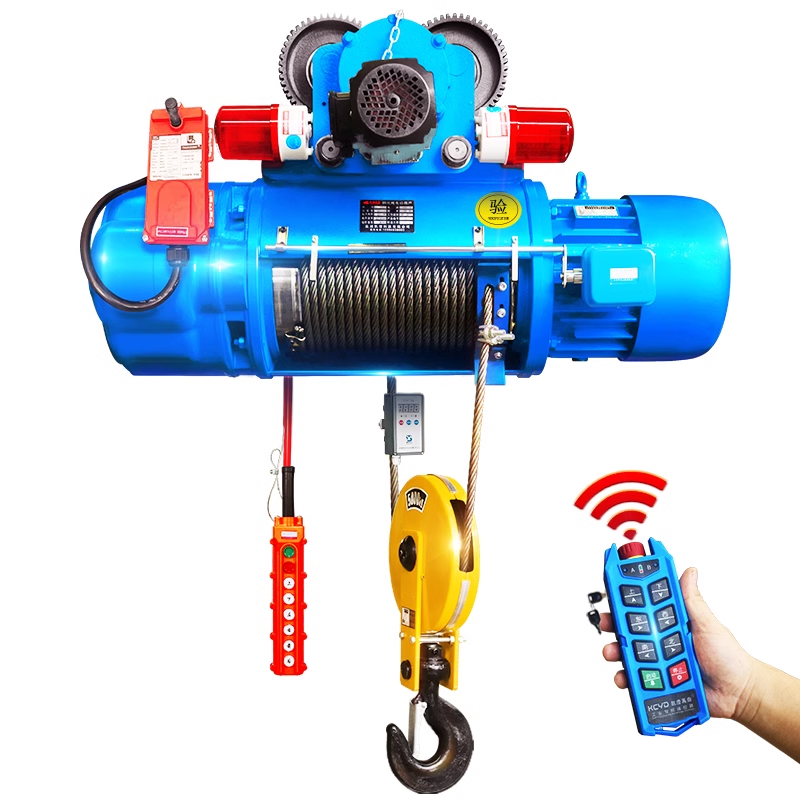How to replace the brake on a chain hoist?

As a critical component of industrial lifting equipment, the reliability of a chain hoist‘s brake system directly impacts operational safety and production efficiency. The brake system serves as a key safety mechanism for chain hoists—once worn or malfunctioning, it may lead to serious accidents. This article provides a detailed guide on the brake replacement process for chain hoists, including precautions and maintenance recommendations, assisting equipment managers and technicians in ensuring safe and reliable lifting operations.
Pre-Replacement Preparations
1.Safety Assessment and Inspection
- Before replacing the brake system, conduct a thorough inspection of the chain hoist.
- Check the wear level of the existing brake pads (replacement is typically required when thickness is less than one-third of the original).
- Inspect the brake drum or brake disc for cracks, deformation, or excessive wear.
- Test brake performance and document the response time and braking force of the current system.
2.Tools and Materials Preparation
- Specialized brake system repair toolkit
- OEM or equivalent-quality replacement brake components
- Cleaning solvent/degreaser
- Personal protective equipment (PPE) (safety goggles, gloves, etc.)
- Wrenches and measuring tools
3.Work Area Preparation
- Ensure the work area is clean, dry, and well-illuminated
- Install safety warning signs to prevent accidental activation
- De-energize the chain hoist and implement lockout/tagout (LOTO) procedures
Detailed Brake System Replacement Procedure
- Removal of Old Brake System
- Follow the manufacturer’s step-by-step disassembly sequence
- Document component orientation and positional relationships
- Inspect and clean all contact surfaces thoroughly
- Properly dispose of discarded brake materials (may contain hazardous substances like asbestos)
Installation of New Brake System
- Verify specifications and model numbers of new components against technical manual
- Perform precision installation using specialized tools
- Tighten all bolts to specified torque values
- Ensure all moving parts operate smoothly without binding
Adjustment and Testing
- Perform initial adjustment of brake clearance to meet technical specifications
- Conduct no-load test to verify braking response characteristics
- Conduct progressive load testing (25%, 50%, 75%, 100% capacity)
- Fine-tune until optimal performance is achieved
Post-Replacement Verification & Maintenance
- Performance Verification Standards
- Full-load braking slippage shall not exceed specified limits (typically ≤1% of lifting height)
- Braking response time must comply with equipment specifications
- No abnormal noise or vibration permitted
Routine Maintenance Essentials
- Inspect brake pad wear regularly (recommended monthly)
- Keep brake system clean and free from oil contamination
- Conduct periodic brake performance tests with documentation
- Monitor for abnormal braking phenomena (e.g., burning odor, unusual noises)
Operator Training
- Introduction to New Brake System Characteristics
- Abnormality Identification & Emergency Response
- Daily Inspection Key Points Training
Common Issues & Solutions
- Brake Overheating: Verify correct load rating compatibility and adjust braking frequency
- Insufficient Braking Force: Check brake pressure and confirm proper brake pad contact area
- Brake Noise: Clean contact surfaces; replace with material-matched pads if necessary
- Incomplete Brake Release: Adjust return spring tension and inspect mechanical transmission components
Chain hoist brake system replacement is a specialized task requiring professional expertise. Strict adherence to manufacturer’s technical specifications is mandatory. Regular maintenance and timely replacement of worn components not only ensure operational safety but also extend service life and enhance productivity.














